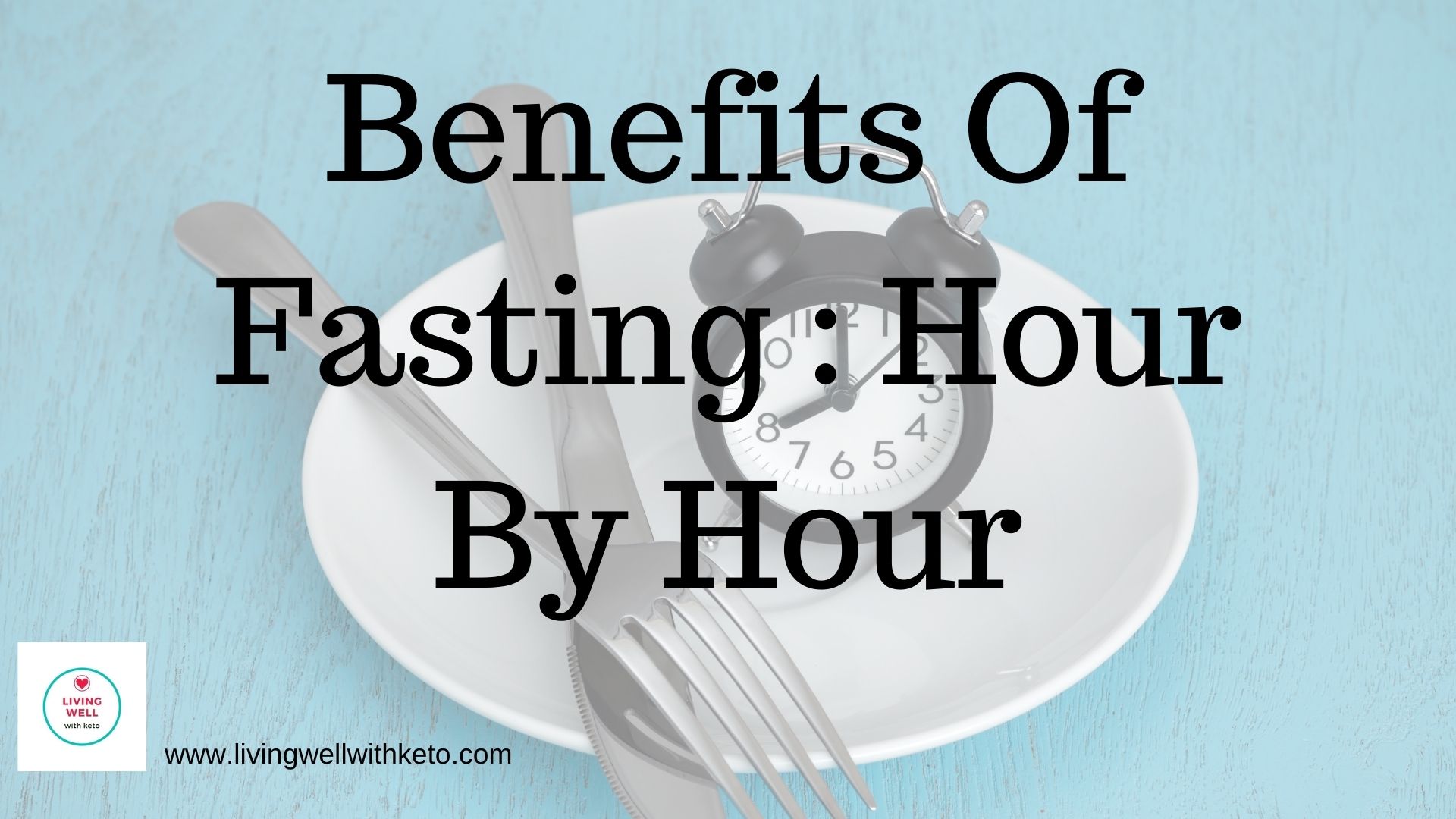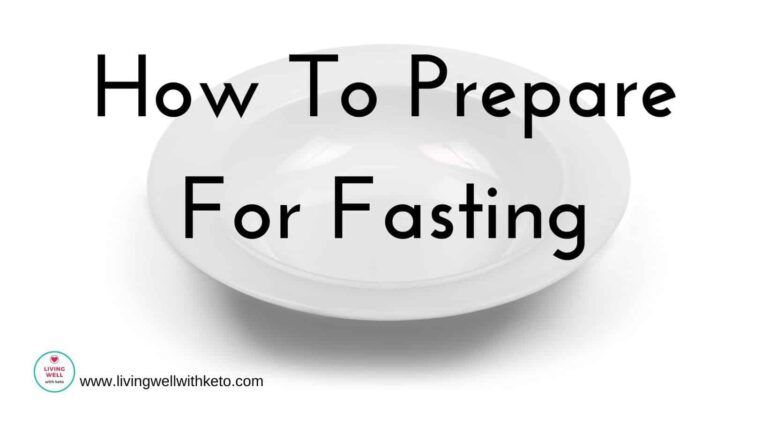Deciding to fast is taking a great step towards achieving your weight loss and health goals. However, its worth taking some time to learn how to prepare for fasting.
This information could go a long way towards making your experience of fasting both pleasant and valuable.
You are taking the first steps along a path that has been walked by humans for millennia. Fasting is literally as old as we are as a species.
You will be doing something that is in complete harmony with your body and your hormones.
You’re ignoring the food industry that would prefer that you ate more or less all the time.
You are going to rise above the idea that simply by missing one meal let alone fasting, you will die.
If you’re not too sure about all the amazing benefits of fasting read :
The amazing benefits of autophagy and fasting.
We evolved at a time when food supplies were intermittent, and our ability to fast was a great survival technique.
The thing is Its still a great survival technique.
Fasting is the single most powerful thing that you can do for your health and weight loss goals.
You will be taking back control over your own body and health.
You will be triggering autophagy with its multiple benefits for your health and weight control.
You will also soon be feeling the benefits in terms of your energy, focus and concentration.
Best of all, you can achieve all of this completely free of charge.
It won’t cost you a cent. Nothing.
If the health benefits of fasting could be packaged up and put into a pill, you’d have to mortgage your home to be able to afford it.
How to prepare your body for fasting
Fasting is like any other of your bodies systems. It follows a set trigger which begins a biological process which becomes more responsive with practice.
In the three or four days before you begin a fast for the first time, you will make things a lot easier if you eat low carb.
In my opinion, up to a week on a keto diet is ideal.
By doing this you will have entered ketosis and your body will have begun the process of burning fat for fuel.
This will be the metabolic pathway that your body will use during your fast.
The more often you have been in ketosis in the past, the quicker your body will adapt to fat burning. For more information about this read:
Fat Adapted On Keto: The top important things to know.
How To Prepare For Fasting: The first steps
Once you’ve spent at least three days to a week eating low carb you will be ready to take your first step into the world of fasting.
I recommend that you start with a simple 12-hour fast.
This could mean that you skip breakfast but eat normally for the rest of the day until midnight.
Sleeping time counts, so by just missing one meal, you will easily achieve the necessary 12 hours.
If you are a regular breakfast eater, you will probably feel hungry at around the time you’d normally have your morning meal.
However, you shouldn’t be feeling as if you’re starving. Being massively hungry first thing in the morning is a sign that you’ve eaten too many carbs the day before.
If you’ve followed advice, and eaten low carb for a few days, this should not be an issue for you.
Of course, there is nothing magical about missing breakfast. It’s just that it’s convenient, and a meal that is often eaten alone.
The results will be exactly the same if you choose to miss lunch or your evening meal instead.
Look at your work and social schedule, and see which times would work the best for you.
There is only one rule to fasting:
Don’t eat.
By this I mean that nothing but what you drink should pass your lips. Your drinks should be water, black tea or coffee or green tea.
No milk, sweeteners or diet drinks of any sort.
Continue with your 12 hour fast for as many days as it takes you to feel as if you can do this easily.
This varies from one person to the next, so there are no hard and fast rules here.
The next step
Once you are the 12-hour fasting king/queen, you are ready to stretch this out a little.
I suggest that your next step is to move your 12 hour fast so that it begins at least three hours before your bedtime.
Not eating late at night is proven to have a lot of health benefits. Certain neuro functions cannot take place if your body is too busy digesting its last meal.
This study showed a direct link between snacking late at night and poor quality of sleep.
The study suggested that a lack of sleep would have a negative impact on learning and memory.
There is also evidence that the brain goes through a cleaning stage which is triggered by deep sleep.
If we are not able to sleep well because we’re still digesting the last meal of the day, this important process is going to be impaired.
Again, as with 12-hour fasting, stay with this stage until it feels natural and normal to you.
There is no need to rush. You can just jump straight into fasting, but there is no need.
How To Prepare For Fasting: Moving forward
Once you are comfortable with fasting for 12 hours, and never eating in the three hours before bedtime, you can think about tightening things up.
Reduce your eating window down from 12 hours to 10, and then down to 8 as soon as you’re easy with the 10-hour eating window.
Your final step at this stage would be to reduce your eating window down to 6 hours.
By now you should be fasting for between 14 and 18 hours each day. If you have been listening to your body you will be finding it easy to not eat for this period each day.
Hunger should not be a problem for you at all. That isn’t to say that you never feel hunger, but that the feeling is short-lived, and can easily be ignored.
If you do find that you are getting very hungry, it’s possible that you are not eating enough during your eating window to reach your daily energy needs.
Try increasing the amount you eat, especially of healthy fats such as olive oil, avocados, cheese and nuts.
Fiber filled veggies can also help to keep you feel full for longer as well as providing some vital micro nutrients.
Can you stop at fasting for 18 hours each day?
Yes you can. There is a mountain of evidence that this method of fasting, commonly referred to as 18/6 fasting has multiple health benefits.
See Best intermittent fasting plan: 16/8 plan
If you’re already a fan of keto, this form of intermittent fasting has been shown to compliment the keto diet.
It will also trigger autophagy, which is the body’s spring-clean and repair programme.
However, autophagy will happen during an 18-hour fast whether you are on a keto or low carb eating plan.
Autophagy is triggered by the absence of nutrients, no matter what you were eating beforehand.
This form of intermittent fasting will increase your metabolic rate, helping you to achieve even more weight loss. here and here.
Do you want to take your fasting to the next level?
The next level is to eat only one meal a day. Fans of this fasting method normally refer to it by the very cool sounding OMAD.
One Meal A Day or 23/1.
It can be any meal you choose. Just remember that you’re going to be needing to consume all your daily nutrients at this one sitting.
If you’re no fan of eating early in the morning, you can choose to have your single meal during the evening.
This is probably the most popular time to pick.
Remember to not eat for at least three hours before going to bed.
The health benefits of the 24-hour fast are amazing. Apart from the super healthy process of autophagy, OMAD also causes:
- Increased levels of human growth Hormone here and here
- Reduction in inflammation, implicated in many diseases including cancer. here and here.
- Decreased risk of future health issues.
It’s important to recall that this eating must be done in the early evening. This study suggested reduced health benefits if the single meal was eaten after 5pm.
Many people have successfully employed this method of intermittent fasting for several months or years.
However, it is more common that a pattern of 18/6 is used daily, with the longer OMAD employed on just one or two days each week.
The 36-hour fast
It’s important to stress here that there is not yet enough evidence about exactly what is the optimum time for a fast.
There is evidence that suggests that autophagy and its many benefits peaks at about 36 hours. This is the length of fast that I would recommend.
Once you’ve become easy with 18 or even 24 hour fasts, this is the next big step in your fasting journey.
A 36-hour fast can be made a lot easier if you start after a late lunch at around 4pm. Eat nothing else that day and nothing the day after. This will take you up to 32 hours by midnight the following day.
Obviously, you don’t want to get up to eat at 4am, but once you do start your third day, you can break your fast at any time.
Try to always break your fast with a nutritious meal, and avoid the temptation to over eat.
There are some people who feel that you need to start carefully, possibly with a light snack.
This isn’t everyone’s experience, and many people find that they can eat a normal meal with no issues.
The big one
This is the 72-hour fast. I don’t see a lot of evidence that you’d need to go longer than this.
Why fast for 6 days when you can do two 3 day fasts and reap the same benefits.
This is not a fast to do regularly. Probably two or three times a year would be sufficient. A fast of this length would keep you in autophagy for long enough to completely reset your immune system.
Professor Valter Longo, PhD studies the effects of fasting on health and the immune system. He states that:
“When you starve, the system tries to save energy, and one of the things it can do to save energy is to recycle a lot of the immune cells that are not needed, especially those that may be damaged.”
He discovered that following refeeding, the levels of white blood cells rose quickly. These were new white blood cells.
This demonstrates that the study’s findings that fasting for a 72-hour period of time followed by re-feeding with a healthy, nutritionally dense meal can provide you with a new immune system.
Brace yourself to achieve this fast once or twice a year and you will be giving your health and your future health an enormous boost.

It can help control any weight issues you have. It can also reverse or heal many health problems and can lower your risk of developing many diseases in the future.
Fasting does take a little practice before it is something that you can easily do.
However, by easing yourself slowly into a fasting regime, you can make the process as pain free as possible.
As you become more familiar with fasting, you will be able to do this with greater ease.
Many people who are not yet practiced at fasting will find that hunger can be a problem at the start.
The trick is to remember that hunger tends to come in waves. If you can ignore the hunger, by distracting yourself or keeping busy, it will soon pass.
This becomes less of a problem once you are fat adapted, and can adjust to fasting easily.
There is no evidence that a healthy, normal body weight person cannot fast for up to 72 hours without problems.
Throughout our time on earth, humans have fasted and thrived.
We as a species are well adapted to fasting, but we are not well adapted to over eating.
When we over eat, or eat too often, we get sick. Intermittent fasting can help to boost our health and our longevity.

The amazing benefits of autophagy and fasting
Common signs you’re in ketosis
Fat adapted on keto: the top important things to know
Best intermittent fasting plan 16/8 plan
















